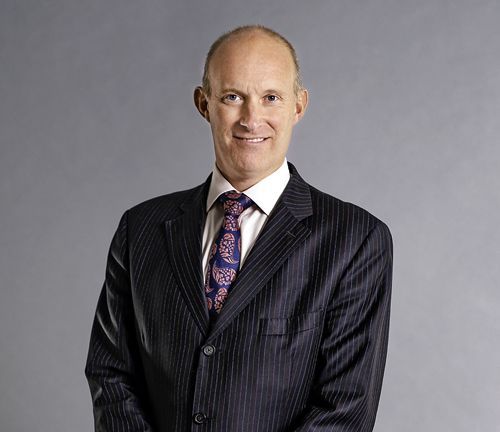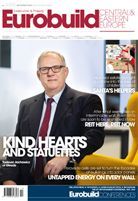Reimagining open space
Office & mixed-use development
Mark Robinson, CEE research specialist, Colliers International: It gives us the ability not only to work in the office but to be able to work from anywhere. It’s now kind of commonplace for employees, young or old, to be able to pop into a café and do some work. Companies are aware of this and it has been informing their decisions when it comes to leasing office space. For example, in the Colliers office I am sitting in, in Prague, there is room for app. 40 people, but we have more than 40 employees. If everyone came on the same day and sat in the office there would not be enough space for everybody. The office has been planned on the basis that not everyone would be here at the same time. Ten years ago we would be thinking: Ok, we have 55 employees or whatever it is, and therefore we need 55 spaces – which means a bigger office.
So it’s now typical for tenants to take up less space just because technology
allows them to?
Not necessarily, because this is just one part of the demand story. The other part is that some space has been given up to what we call activity-based work locations. That is, space within the office that is broken up into areas with sofas, so people who want to have discussions can sit on the sofas, rather than trying to find a meeting room. If they need to make a phone call and they are in an open-plan office, what they do is to go to a phone booth, like a tiny cubicle, where they can make their phone call. So that has changed as well. That tips the balance back towards the demand side. The demand is maybe less in terms of desk space, but more for social space within the office. And it certainly doesn’t make it easy to assess that demand.
How should offices be designed to meet the expectations of upcoming generations?
The predominant look of most new offices is open-plan. In our March 2018 survey of CEE clients we found that only an average of around 11 pct of the respondents sit in what we call a cellular office – meaning separate rooms. This means that 89 pct spend at least some of the time, maybe all of it, in an open-plan environment. But new generations are hardly married to this concept. It is not something that they would ever become addicted to. Deloitte asked this precise question in one of its surveys and only 19 pct of the 2,500 millennials surveyed in Poland with an average age of 23 said they would prefer to work in an open space environment. A total of 14 pct would like to work in their own single room. Another 12.5 pct said they are happy to work in partially divided open space and 41 pct would prefer a separate room for two to six people – kind of a large pool, if you like, of people would like a separate room. So it was quite interesting that they are revolting in a small way against full open-plan.
What should we do then?
Creating a bank of phone booths and break-out zones is almost like a reaction to having an open-plan office. Because you want to have privacy sometimes and you also don’t want to disturb your colleagues when you are having a client conversation or whatever. And break-out space is also needed for meetings, because much of the function of the office now is as a meeting place. It certainly came across in our survey that a lot of people now see it in this way. For me the function of an office is actually a place to come in on days when I know that other people will be there so that I can interact with them, so that I can have a face-to-face conversation with them. So you have to make sure that there are enough meeting rooms – areas where you can actually talk and not disturb other
people. So that’s why you have those break-out areas. That’s why you have these separate small meeting rooms and so on. And that is going to have to become part of the workplace solution and is kind of an offshoot, a consequence, of the decision to have an open-plan office.
They have to make themselves look good.
Millennials – and I think this is becoming an established fact – are quite demanding as employees. Older people like me are kind of thinking, well, I’m lucky to be able to sit in a nice office when I compare it to some of the other offices
I worked at previously, which were maybe not always so pleasant. But for Millennials it’s the first time they’ve sat in an office and they expect a certain quality. The supply side has to be aware that, inexorably every year, an increasing percentage of the workforce is thinking this way. Therefore they have to make sure there is a bike rack in the building, otherwise it’s not seen as a building that’s appealing. In one Colliers research piece we had a Skanska HR director in Poland say that there’s a very high percentage of employees who want to see the building they are going to work in before they accept a job offer. I can’t imagine that I would ever have asked, back when I was going for my first jobs 25 years ago: “Do you have a bike rack?” before I accepted a job offer. But now this is much more common.






















































